How Lenovo made the world’s first Kiss Activated F1 trophy | TOI Auto
The start of something new
Let us start with the basics. Lenovo provides F1 with IT support and helps with broadcasting the race well. Naturally, it is no easy task to manage such a huge amount of data. Modern F1 has multiple track-side cameras as well as on-board cameras on the cars. For reference, during a typical race weekend, 500 TB of data is gathered. We were informed that around 480 GB of video footage is generated on race day and about 300-400 GB of analytical data is gathered during a race week. When asked about the amount of increase in data gathered by F1 compared to 10 years ago, Smith said “It’s almost incomparable. We are doing a lot more with data, we are collecting so much more telemetry off the car and driver information. Technology has grown and evolved.” She guesses that the amount of data collected has increased by at least 200% compared to a decade ago.
Now in their second year together, both parties are continuously looking at how they can work together to bring more to the table, both in terms of operations as well as fan engagement. Lenovo provides the Formula 1 IT team with both hardware and software solutions. The hardware devices include smartphones, laptops, monitors and even HPCs (High Performance Computing). These devices ensure that the various track-side operations can be carried out smoothly. The list of devices includes both consumer-grade and business devices.
Splitting the operations
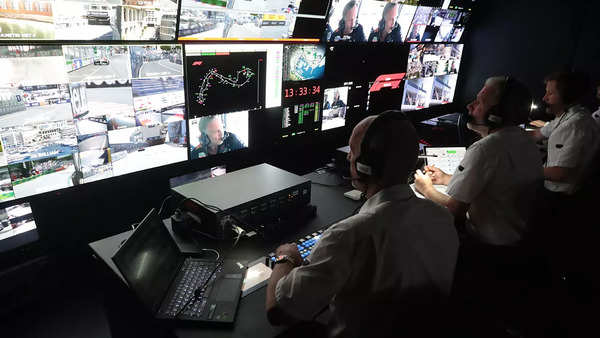
Formula 1 Event Technical Centre (ETC)
Formula 1 set up the central media centre back in 2020 to combat the challenges of remote working brought on by the pandemic. The facility was set up in a matter of three months and since then, the sport has been able to split the work between the track-side Event Technical Centre (ETC) and the Media and Technical Centre (M&TC) located in Biggin Hill, UK. The benefit of this approach is that F1 has been able to reduce the number of people and equipment that needs to travel to every circuit. Doing so also has a benefit in terms of sustainability as fewer resources have to be spent when arriving at a new location for a race weekend.
Typically, there are 180 people on the ground at the event while around 200 people are working back at base. The work to build the ETC begins 10 days before the race. It takes five days to build the ETC which houses more than 750 pieces of equipment. Once built, all the equipment is set up, the cables are laid down and the team gets working. We were informed that 58.5 km of fibre cable is laid down around the circuit and there are 38 antennas that facilitate two-way data transfer. Two 10 Gb fibre lines are used to transmit the massive amounts of data gathered at the ETC and shared with the M&TC.
By splitting the work between the ETC and M&TC, Lenovo can manage a race weekend even with minimal on-site equipment and most of the work can be handled by the remote media centre in the UK. While the entire F1 team is known for their nearly magical ability to move their entire equipment across continents and set things up before the race within a week, there can be times when not all the equipment might reach the next venue. In such cases, Lenovo is certain that they can still manage things, albeit at a smaller scale.
Taking on new challenges
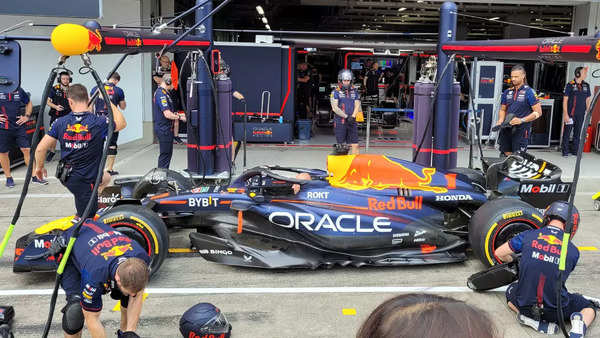
When asked about the biggest challenge for Lenovo in working with Formula 1, the company said that it was providing reliable hardware solutions. Formula 1 is a fast-paced sport, one that travels around the globe. The devices used for the track are not sourced locally in every country, rather the same set of devices is carried around the world. Naturally, these products have to endure physical challenges, including varying weather conditions as the sport hops from one country to another. On a track like Suzuka or Spa, it is not uncommon to see rain during the weekend. Thus Lenovo has to provide F1 with robust options that work no matter how much of a challenge is thrown at them.
Partnerships like the one between Lenovo and Formula 1 can also provide a chance for both parties to learn new things. During our conversation, Ketchen did mention that there certainly were times when Lenovo was surprised by the inputs from the sport. It also led to the use of the virtualisation platform (splitting the work between on-site and off-site centres) that can now even be deployed for other Lenovo customers, should the need arise.
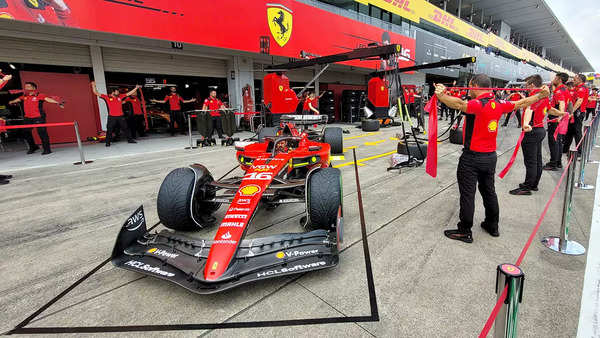
As for data collection from various parts of the race track, Formula 1 relies on fibre optics as the medium provides a fast and reliable method for data transmission. Since the sport goes to many different countries during a season, there can be a variation in the local factors. Despite this local variance factor, the overall data transmission experience remains more or less the same from Formula 1’s side. Technological advancements have meant that there is not a very large variation between the latency numbers even when you move from Austin to Suzuka. The largest latency number that they have observed is 300 ms (in Australia) which is not perceivable by the human brain on its own. Having said that, since the central media centre is situated in the UK, races being held in Europe tend to have a lower latency than those a bit further away.
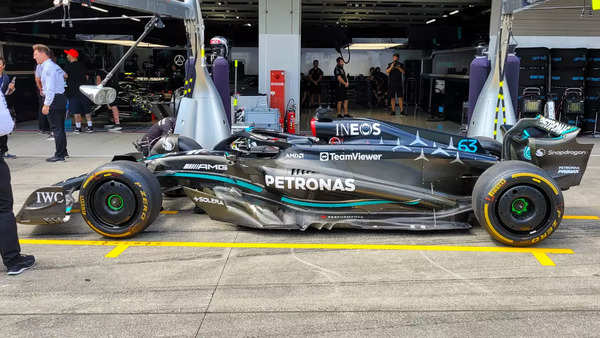
Improving the fan experience
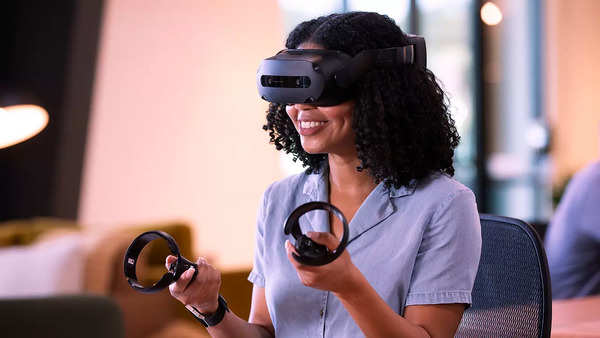
Lenovo ThinkReality VRX
While most fans enjoy watching the race, the overtakes and team strategies playing out, their viewing experience can further be enhanced in a number of ways. For fans watching the race remotely, the experience becomes more interesting with data-related graphics, post and pre-race coverage and innovative camera angles. The workstations provided by Lenovo help the F1 staff to generate these types of content while being on track and keeping the fans engaged in new ways. Another addition that Lenovo is bringing this year is virtual reality (VR) experiences for those at the track. Fans attending the Suzuka Circuit or the Circuit of the Americas (COTA) this year can play an exclusive F1 VR game using the ThinkReality VRX headset. The company is looking at more innovative ideas that can be brought to race weekends and make the experience for F1 fans even more engaging and memorable.
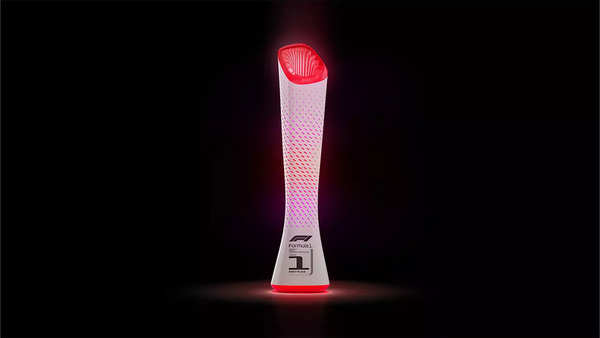
Lenovo’s Kiss Activated trophy
Lenovo also brought in a ‘kiss-activated’ trophy to the Japanese GP which is activated after the winner kisses it. The trophy then glows in the colour of the national flag of the winning driver. This is the first-ever trophy of its kind and Lenovo plans to bring another iteration of it at COTA.
Racing towards a better tomorrow
A while ago, Formula 1 had set a goal of achieving carbon neutrality by 2030 and the sport has continuously shown its dedication towards becoming more sustainable. The current era hybrid engines are just one example of the same. Similarly, there are measures to make the IT side of things as sustainable and efficient as possible. Lenovo has a service called ARS (Asset Recovery System) under which, Lenovo collects any damaged equipment or one that is no longer in use. These devices are then refurbished and given a second life.
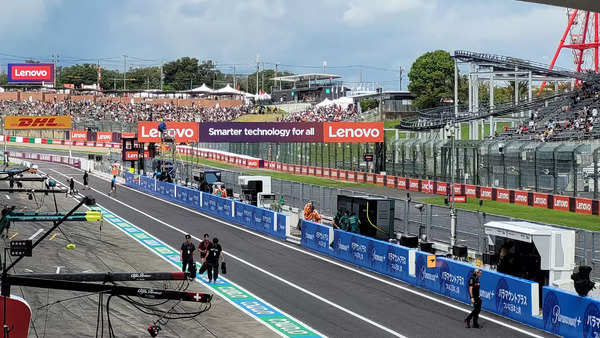
Both Lenovo and Formula 1 are conscious of giving back to the community and thus look at options where these devices can be given to charities and help those who are not as privileged. ARS also helps Formula 1 offset the cost of procuring new technology. To synchronise the needs of a fast-paced sport like F1 and take advantage of the latest in the world of tech, F1 is looking at moving towards a consumption-based technology model. Not only will this ensure access to the best of equipment and services but also not tank the budget too severely.
Even the equipment used is becoming more sophisticated and thus more efficient in operation. A single server rack usually has 180 processors now, allowing the use of just one server for tasks that would earlier require six to seven servers.
Where next?
Altogether, our trip to Japan gave us an idea of how a technology player like Lenovo can contribute to a data-rich sport like Formula 1. Not only is Lenovo bringing in a high-tech approach towards the collaboration, it is one with sustainability in mind as well. With a multi-year partnership in place, it would be interesting to see how the duo continues to innovate and bring more for the fans in the years to come.

